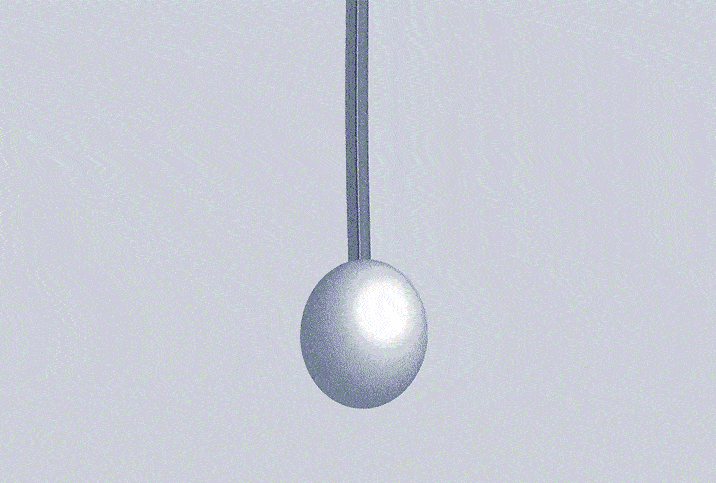You Need to Know the Symptoms and Causes of Testicular Torsion

Of all the painful misfortunes that can befall male genitalia, testicular torsion has to be one of the most harrowing.
Imagine excruciating pain, pain far worse than a regular kick to the scrotum. We're talking about the sudden onset of sharp, severe pain in the testicles accompanied by discoloration, swelling, nausea and fever. The pain can be so awful it even causes vomiting.
Worse still, delaying treatment even by a few hours greatly increases the odds that you could lose the testicle.
What is testicular torsion? What causes it, what are the symptoms, who does it happen to and is it possible to avoid the condition?
Overview
The word "torsion" means the twisting of something on its own axis. In this case, testicular torsion refers to a medical condition in which the spermatic cord—the bundle of tubes that attaches the testicle to the abdomen and allows it to dangle below in the scrotum—gets twisted on itself.
The spermatic cord carries tubes called the vasa deferentia that transport sperm from the testicles to the ejaculatory duct. It also contains arteries, veins and lymph vessels, all of which are vital to the functioning of your testicles.
Sure, on its face, getting the spermatic cord twisted sounds uncomfortable. But it's much more than that: Twisting of the spermatic cord can cut off or sharply decrease blood flow to the testicle. Without blood flow, especially if the cord hasn't been untwisted after six hours, the testicle soon begins to atrophy and die.
"Typically, it happens to boys and men between 12 and 18," said Amy Pearlman M.D., a men's health specialist and co-founder of Prime Institute in Fort Lauderdale, Florida. "But it can even happen before birth. Some babies are born with a dead testicle. It can twist in there before birth."
It's unlikely the testicle can be saved in the case of a newborn infant with testicular torsion that occurred in the womb. But with boys and men who experience sudden, unexplained, severe testicular pain, the most important consideration when facing a possible case of testicular torsion is speed.
According to the American Urological Association (AUA), the testicle may begin to shrink or atrophy if blood flow isn't restored within six hours. If treatment for testicular torsion is delayed more than 12 hours, nearly 75 percent of patients lose the testicle.
"Timing is key," Pearlman said. "You need to restore blood flow to the testicle. So whenever there's a concern, we're getting the OR [operating room] ready and we're consenting the patient and taking them right back."
Causes of testicular torsion
Testicular torsion differs from many other conditions of the male genitals in that there is no clear, direct cause in many cases. However, there are certain risk factors, such as age, having had testicular torsion previously and a family history of the condition.
Testicular torsion mostly affects teens and young men, occurring in about 1 in 4,000 males younger than 25, the AUA states. According to Cleveland Clinic, males between ages 12 and 18 account for 65 percent of testicular torsion cases.
The good news is it usually strikes only one testicle: Only about 2 percent of people who experience testicular torsion get it in both testicles.
There may also be a genetic component. In most men, the testicle is attached to the inside of the scrotum. However, some men have a genetic condition referred to as the "bell-clapper deformity" that allows the testicle to swing around freely like the clapper in a bell.
Apart from that, a lot of what we know about the causes of testicular torsion centers on documentation of what people were doing when testicular torsion occurred.
"It can happen while people are sleeping and it's been described with people after vigorous activity, so that could have something to do with it," Pearlman said.
There's a theory that torsion happens to teens and younger men when they're sleeping because that's when the testicles are most fully relaxed. The idea is that when the cremaster muscles—thin layers of muscle that surround the testicles and spermatic cord, raising and lowering the testicles in response to temperature changes—contract during the night, it can cause the cord to twist on itself.
The cremaster muscle does contract to raise testicles in response to changes in temperature and as a part of the "flight-or-fight" response. For a lot of guys, torsion happens when they're sexually aroused or when they ejaculate, so the frequent nighttime erections of adolescence and early adulthood could contribute to the incidence of testicular torsion.
Symptoms of testicular torsion
Guys usually know something about testicular pain. The testes are delicate, and all it takes is an unlucky bump or tap, or even shifting your sitting position, to cause nauseating pain to engulf your entire lower abdomen. That's why it's important to differentiate the symptoms of testicular torsion from more pedestrian testicular pain.
Keep in mind that testicular torsion can occur when you're active or inactive, sitting or standing, or sleeping. The main difference is the intensity of the pain, how long it lasts, and the rapid occurrence of pain that may or may not have an obvious cause.
"It's sudden onset, acute pain, along with changes in the scrotum," Pearlman said. "The typical symptoms of somebody coming in with testicular torsion is going to be an acute onset of testicular pain, nausea, very tender to palpation, swelling, and it could be a high-riding testicle."
Testicular torsion symptoms may include the following:
- Sudden onset of continual, severe pain in the testicle
- Nausea
- Vomiting
- Swelling
- Tenderness to the touch
- One testicle positioned higher than usual or sitting at a strange angle
- Changes in scrotum color, particularly redness or darkening
- A visible lump in the testicle
- Fever
Don't get it twisted
As dangerous as testicular torsion is, it is extremely rare. But given the crucial importance of getting it treated quickly, guys really need to understand what's at stake if they put off getting help. Younger guys may get embarrassed talking about problems with their genitalia and avoid telling anyone about a potential case of testicular torsion.
But to reiterate, even delaying for six hours could mean the difference between spending the rest of your life with one testicle or two.
"It can happen to any guy," Pearlman said. "The main points to emphasize here are when do you need to go to the emergency room and when do you not need to go."


















